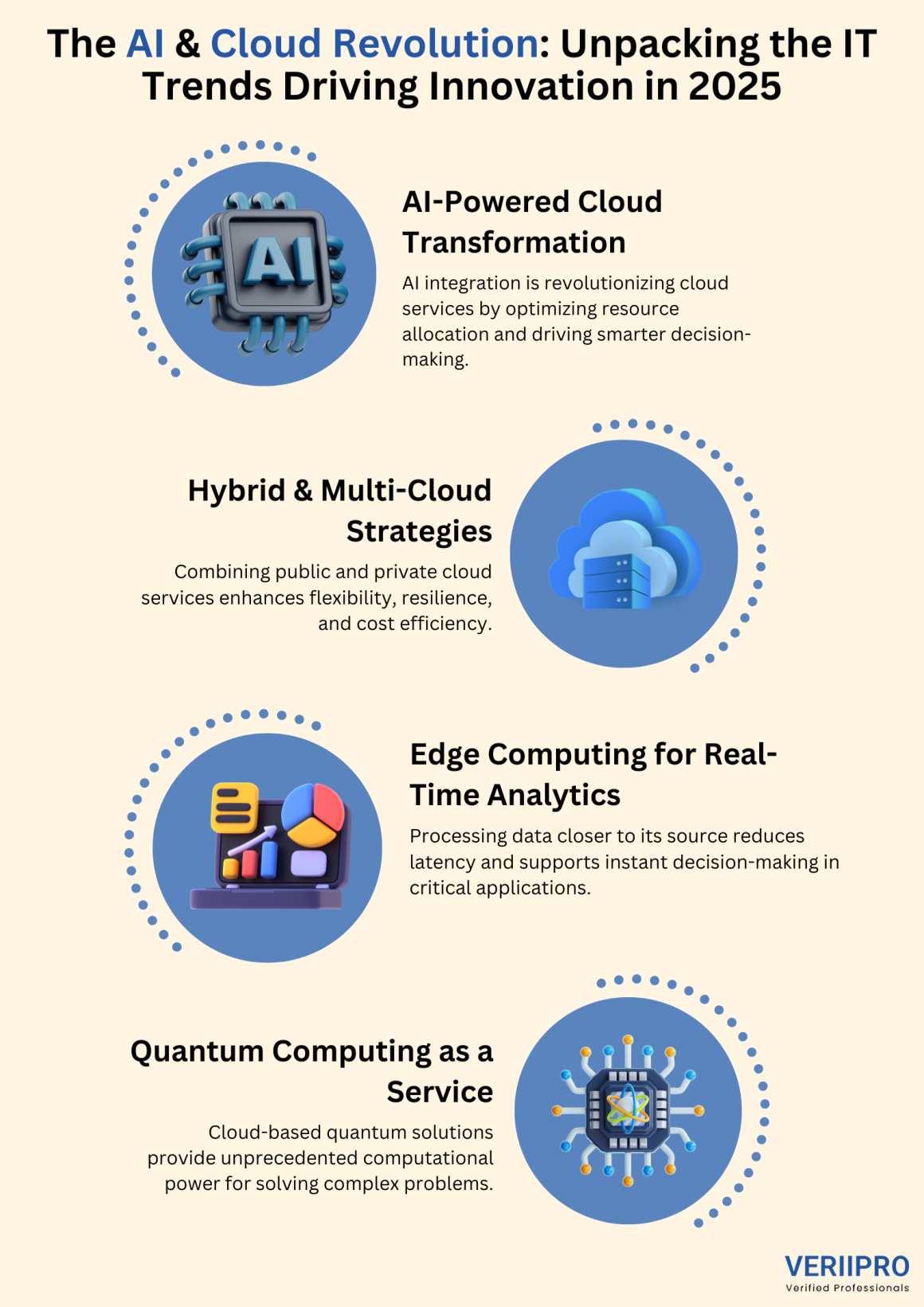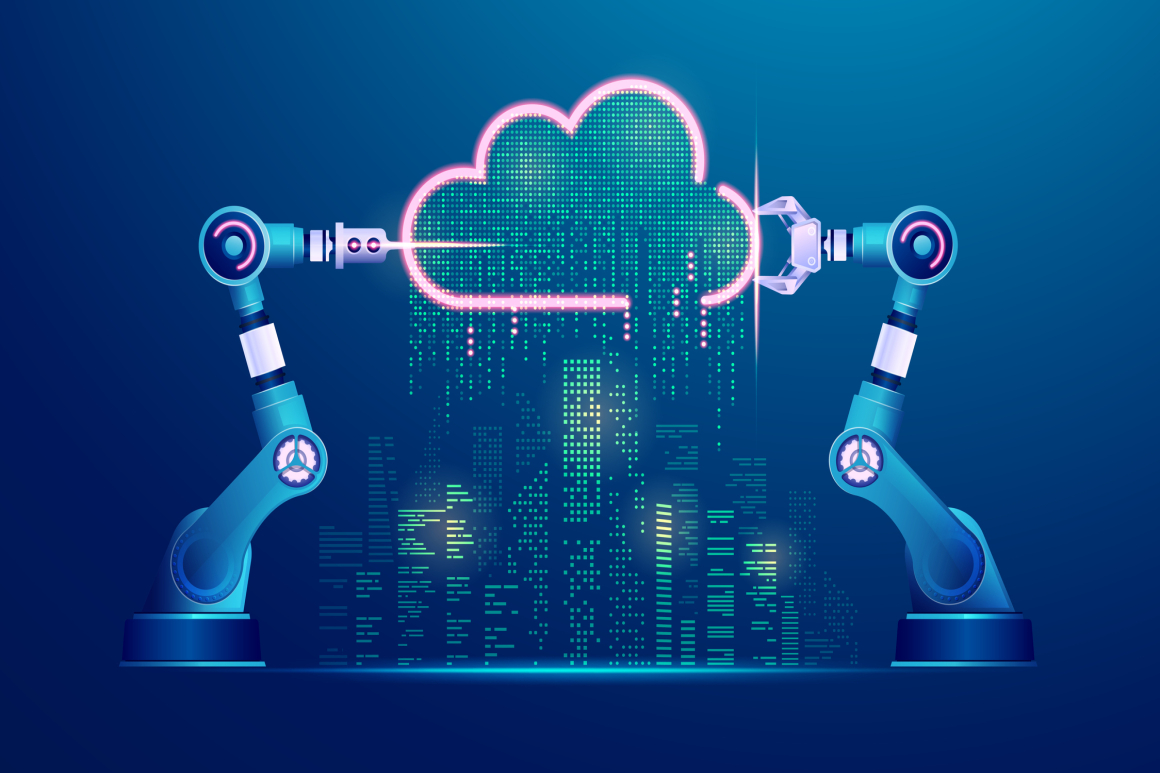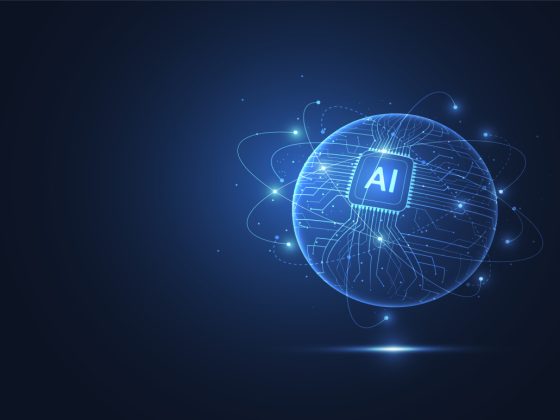The AI & Cloud Revolution: Unpacking the IT Trends Driving Innovation in 2025
In 2025, the convergence of artificial intelligence (AI) and cloud computing is not only reshaping IT infrastructure but also redefining how businesses innovate, scale, and compete. As enterprises continue to embrace digital transformation, the rapid evolution of AI—powered by massive investments from tech giants—and cloud technologies is unlocking unprecedented opportunities in automation, data processing, and customer engagement. This new era, marked by AI-driven cloud services, hybrid strategies, and energy-efficient data centers, is fueling a revolution that will shape the future of IT.
AI at the Core of Cloud Transformation
The past few years have seen a significant shift toward integrating AI into every layer of cloud computing. Major players like Nvidia are reporting strong demand for AI infrastructure, with estimates projecting revenue growth that outpaces previous years. Companies are deploying advanced generative AI and machine learning models to optimize cloud operations—from real-time resource allocation to enhanced cybersecurity. This “AI-native” approach is enabling cloud platforms to not only deliver better performance but also drive cost efficiencies and innovation across industries.

Emerging IT Trends for 2025
Hybrid & Multi-Cloud Strategies
As organizations seek to enhance flexibility and mitigate risks like vendor lock-in, hybrid and multi-cloud strategies are becoming essential. By blending public and private cloud services, businesses can leverage the unique strengths of each platform to optimize performance and control costs. This trend is supported by research from firms such as Forrester that highlight the importance of multi-cloud deployments for improving resiliency and disaster recovery.
Edge Computing for Real-Time Processing
The explosion of Internet of Things (IoT) devices and the need for low-latency processing are propelling edge computing into the spotlight. By processing data closer to the source, organizations can significantly reduce response times, which is critical for applications like autonomous driving, healthcare monitoring, and augmented reality. This approach also reduces the burden on central data centers, enabling more efficient use of bandwidth and energy.
Quantum Computing as a Service
Quantum computing is stepping out of the laboratory and into mainstream business applications. With cloud platforms beginning to offer quantum-as-a-service, enterprises can access unprecedented computational power without massive upfront investments. This technology is particularly promising for complex problem-solving in pharmaceuticals, finance, and materials science, potentially transforming industries that rely on intensive data processing.
Serverless Computing and Automation
Serverless computing continues to gain traction by allowing developers to deploy applications without managing underlying infrastructure. This model not only accelerates time-to-market but also enhances scalability and cost efficiency. Automation tools that streamline provisioning, monitoring, and policy enforcement are becoming indispensable as cloud environments grow in complexity. As a result, businesses are finding it easier to maintain operational efficiency while focusing on innovation.
Sustainability and Green Computing
With increasing pressure to reduce environmental footprints, sustainability is emerging as a key differentiator in cloud computing. Energy-efficient data centers and green IT practices are becoming vital, as organizations seek to optimize power usage and comply with stricter environmental regulations. Recent studies suggest that improving data center efficiency can lead to substantial cost savings and reduced carbon emissions, making sustainability a strategic business imperative.
The Intersection of AI, Cloud, and IT Infrastructure
At the heart of this revolution is the dynamic interaction between AI and cloud computing. Data centers, for instance, are undergoing a significant transformation to support AI workloads—requiring advancements in both hardware and software. Companies like Databricks are leveraging AI to refine data management and analytics, driving efficiency in cloud operations. Additionally, innovations such as specialized processors (e.g., DPUs) are offloading critical tasks from CPUs, allowing cloud systems to process data more rapidly and securely.
Meanwhile, the role of edge computing is becoming increasingly prominent. By handling computational tasks at or near the data source, edge solutions improve the responsiveness of applications while reducing latency—a critical requirement for real-time decision-making. This trend is particularly important as businesses rely on large-scale AI applications that demand both speed and reliability.
Strategic Considerations for Businesses
For organizations looking to thrive amid these rapid changes, a proactive approach is essential. Here are some strategic considerations to keep in mind:
- Invest in Hybrid Cloud Solutions: Adopting a multi-cloud strategy not only enhances operational flexibility but also safeguards against potential disruptions in a single platform.
- Embrace Automation: Leverage serverless architectures and automation tools to optimize resource management and reduce operational costs.
- Prioritize Sustainability: Consider the environmental impact of IT operations by choosing energy-efficient data centers and sustainable cloud practices.
- Prepare for Quantum Breakthroughs: Stay informed about advancements in quantum computing, as early adoption could provide a competitive edge in fields requiring complex data analysis.
- Enhance Security and Compliance: With evolving regulatory landscapes, robust AI-driven cybersecurity measures are critical for protecting sensitive data across cloud and edge environments.
By aligning technology investments with long-term business goals, companies can unlock significant efficiencies and drive innovation. The ongoing evolution of AI and cloud computing presents immense opportunities—and those who adapt quickly will be best positioned to lead in this new digital era.
Looking for opportunities in tech innovation? VeriiPro is here to help!










